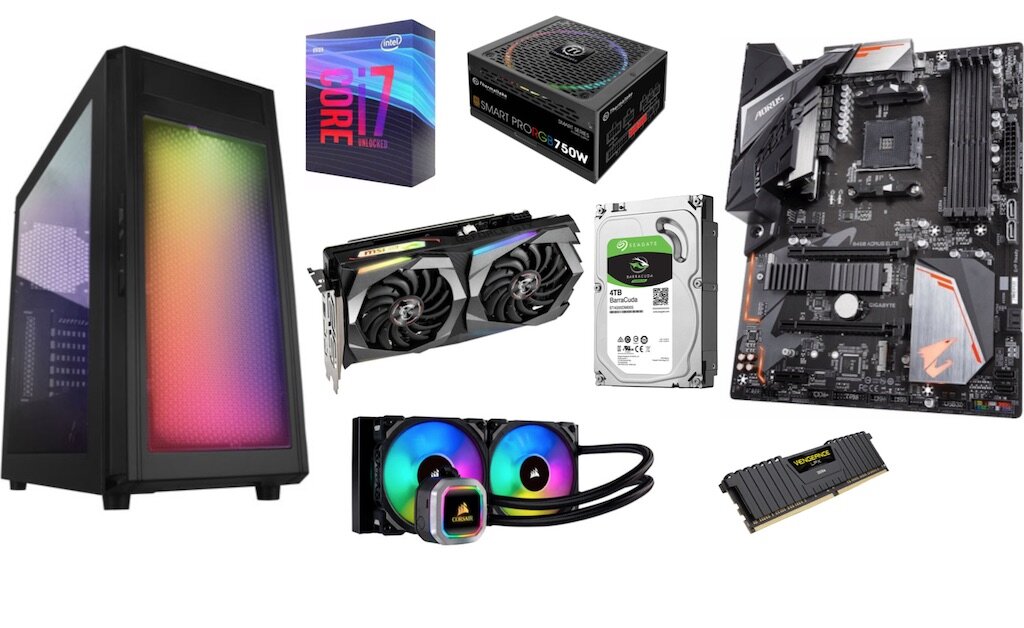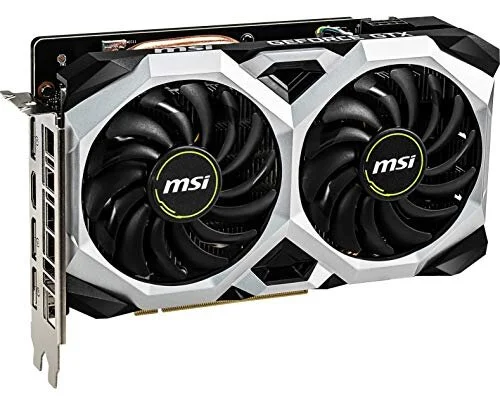So you want to build your first gaming PC, here's what you need
Topic: Build Guides
Before building your first PC, I always state when dealing with any form of tech, do diligent research before you even begin to purchase any hardware. Also, before you start your PC build, make sure you have all the right hardware before you begin the installation.
Picking the right PC components for the build can be challenging; it was for me when I built my first PC. Once you conquered your first PC build, your second and third build becomes a piece of cake. So simple, you can do it with your eyes close. The primary reason why I'm putting together this PC build guide is to take some of the mental stress off so you can precisely gather up the parts, and put together your dream machine.
In this build guide, we'll mainly focus on building a gaming PC, because many first time PC builders will probably load their system with a great deal of gaming software. But this build will also be used to handle other tasks that include content creation.
Without wasting any more text in this intro, let's begin this PC build.
The Processor
The processor, the CPU, or better known as the central processing unit, is the primary brain of PC. Without it, the computer, as we see it today, would not exist. The processor is what converts instructions users provide into action. The processor executes and directs other vital components to operate in unison.
Now there are endless options to your choice at a variety of price points. There are two primary CPU manufacturers in the consumer market; they are Intel and AMD. Both of these two brands offer unlimited choices. For Intel, you have the current 8th or 9th Generation variants, Core i5, i7, and i9. While with AMD, you have Ryzen or Thread-ripper processors. Both branded processors will allow you to put together a system capable of handling visually stunning gaming titles.
The Motherboard
Now the processor has to be connected to something, right? In comes the motherboard, which is essentially a large circuit board that connects all the components that make up the computer, and allows communication between all the different forms of hardware, such as the hard drive, RAM, and graphics cards. We'll get to these components later on in this guide. The options are limitless, from simple motherboards considered to be a low-end option, all the way up to high-end motherboards that are rich in features.
The type of motherboard you may need all depends on the CPU you purchased and what features you're targeting. Keep in mind not all CPU's work with every motherboard. Always choose the right one. Features such as overclocking capabilities and connectivity options play a significant role in the decision-making process. Here are a few companies that manufacture motherboards, ASRock, Asus, Biostar, EVGA, MSI, and my favorite, Gigabyte.
The Graphics card
In my opinion, the second most crucial component in the PC is the graphics card, and with good reason. You need to view images from whatever the computer outputs onto a monitor. The GPU or the graphics processing unit has an overall impact on the gaming experience. The GPU allows the machine to perform complex graphics calculations allowing PC games to look visually stunning. Many CPUs have integrated graphics, but they can not handle high-level gaming. A discrete graphics card is needed.
There are two major players in the graphics card market; they are AMD and Nvidia. Depending on your budget, you can go with the lower-end option GPU, the GTX 1050 Ti by Nvidia comes to mind retailing under $200 or AMD’s Radeon RX570. Now, if you want the cutting edge gaming experience and money is no issue, consider purchasing the Nvidia's RTX 2080 Ti. Or AMD's Radeon RX Vega, which is a cut below 2080 Ti in regards to performance.
Keep in mind, if you're looking for the absolute best gaming experience, the GPU will likely be the most expensive hardware you'll ever purchase. But you will surely get what you pay for, especially if you're looking to game at higher resolutions and frame rates.
The Memory aka RAM
The Random Access Memory (RAM) is what the term applies; it is the memory that stores regularly accessed data so that the PC doesn't have to rely on obtaining data from a storage device, which can slow a computer system to a crawl. Keep in mind; RAM is not a primary storage device. It temporarily holds on to stored data when the PC powered on, erases data, and then resets it when powered off.
When it comes to RAM, you can never have enough, but for practical tasks, most gaming systems will perform exceedingly well with 16GB, or even 32GB, which believe it or not at that capacity, that's the norm for most gaming systems.
RAM varies widely in speed, size, and design, read your motherboard manual, so you know what RAM is compatible with your system.
The Storage Drive
Then there's the hard drive where all the data is stored. Includes files, documents, your operating system, and of course, your gaming software; basically, any information you need to access stored on the hard drive. In years past, computers consisted of only the spinning hard drive as the primary boot device, but today all systems use the solid-state drive with good reason. There significantly faster, consume less power, and last longer.
Now what type of storage drive you plan on buying will vary; the most common configuration today is a smaller NVMe or SATA SSD as the primary boot drive, which consists of your operating system and commonly used files.
You'll find many system builders go with the Samsung 970 Pro M.2 SSD ( Quick note, make sure your motherboard has the PCIe M.2 slot), and the 3TB Seagate BarraCuda HDD used for large storage files.
The Power Supply Unit
The PC needs power, which is stating the obvious; that's where the power supply unit (PSU) comes to play. It's safe to say the PSU is probably the most overlooked hardware, mainly because it is easy to install and will usually operate with no sudden malfunction. Like any hardware in the computer, when shopping for a power supply unit, you'll need to do your research on efficiency, wattage, and quality, especially if you're putting together a high-end system. Out of all components connected to the motherboard, the graphics card consumes the most power. Make sure to have the right amount of PSU wattage.
For a detailed reference on which power supply unit is right for your system, head over to New Egg website and use the power supply calculator as a reference guide, which allows you to see what kind of power requirements is needed based on your system.
The Heat-sink and Fan
The CPU can not operate unless it has some form of a cooling apparatus; it is needed and critical to your system running. Though most processors you purchase come with a cooler by default, more than likely, you'll want something a little more robust. These options can range from simple fans and heatsinks to more sophisticated cooling solutions. Since this will be your first build, you'll probably want to purchase either a fan-based solution or an All-in-One (AIO) liquid CPU cooler if you plan on overclocking your CPU.
The AIO coolers are not difficult to install even though looks can be intimidating. The liquid coolers are self-contained and don't have to deal with any liquids inside the cooler. As I keep stating, make sure you do your research to see if the cooler is compatible with your CPU and motherboard, and importantly, if you have enough room in your case. Carefully read the instruction manuals provided with these coolers.
Here are the most popular coolers you find in most systems, the Cooler Master Hyper 212 EVO. For AIO coolers, take a look at the NZXT Kraken M22 120mm-RL-KRM22-01.
The PC case
Ah, yes, now we need to place all of this impeccable hardware into a case. The PC case is the most customizing fragment of a PC; this means you can get any case in just about every shape and size. Even though there are different cases on the market, they are all designed for the same components.
Another critical factor to consider in regards to PC cases is cooling. There are plenty of PC cases that come with preinstalled fans, which can be of use. But if your main focus is to have a cooled and stable system, make sure the interior has plenty of space inside your PC case.
I would consider getting the Thermaltake S100 Tempered Glass Black addition for your first build. It's slim and compact with beautiful tempered glass.
The Operating system
Now it's time to install the operating system, which allows users to interact with the computer. Once installed on the hard drive ( preferably an SSD), you may begin installing all of your applications and games.
There are several operating systems of your choice. But by far the most popular OS of all is Microsoft Windows, just about every computer on a planetary scale uses Windows and with good reason. It's easy to install, and it very intuitive.
Linux is another popular OS and has some advantages, one being it's a very secure, less prone to virus attacks, and importantly, it's free. But the main disadvantage of using Linux is it has a very steep learning curve.

















